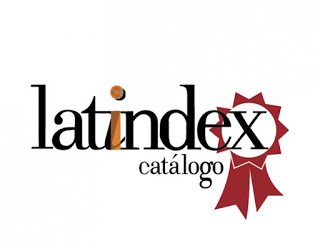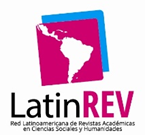La Discusión Grupal y el Marco Mayéutico como Contextos para el Desarrollo de Habilidades Argumentativas
Abstract
RESUMEN. El presente estudio investigó la factibilidad de utilizar el marco mayéutico, un constructo inédito, como herramienta para evaluar la cantidad y calidad de argumentos producidos por los alumnos, en discusiones denominadas Seminarios Paideia. Se analizaron siete transcripciones de seminarios usando métodos no paramétricos y análisis descriptivos. Los resultados muestran que el marco mayéutico puede facilitar la identiicación de argumentos, su calidad, y favorecer su ocurrencia también en otros contextos de discusión dialógica.
PALABRAS CLAVE. Argumentación, Mayéutica, Pensamiento Crítico, Seminario
doi: 10.21703/rexe.20162855703
Downloads
References
Adler, M. (1982). he Paideia Proposal: An educational manifesto. (On behalf of the Paideia Group. New York: Collier books, Macmillan Publishing Company, 1982.
Adler, M. (1984). he Paideia program. An educational syllabus. New York: Institute for Philosophical Research.
Adler, M. (1998). he Paideia proposal. New York: Touchstone Books.
Almasi, J. (1995). he nature of fourth graders´sociocognitive conlicts in peer-led and teacherled discussions of literature. Reading Research Quarterly, 30 (3) 314-351.
Almasi, J., O’Flahavan, J., y Arya, P. (2001). A comparative analysis of student and teacher development in more and less proicient discussions of literature. Reading Research Quarterly, 36 (2), 96-120. Recuperado de http://www.jstor.org/stable/748297
Alvermann, D., O’Brien, D., y Dillon, D. (1990).What teachers do when they say they’re having discussions of content area reading assignments? A qualitative analysis. Reading Research Quarterly, 25 (4) 296-322. Recuperado de http://www.jstor.org/stable/747693
Alvermann, D., Young, J., y Weaver, D. (1996). Middle and high school students´ perceptions of how they experience text-based discussions: a multicase study. Reading Research Quarterly, 31, 244-267.
Anderson, R. C., Chinn, C., Waggoner, M. A., y Nguyen, K. (1998). Intellectuallystimulating story discussions. In J. Osborn & F. Lehr (Eds.) Literacy for all: issues in teaching and learning. (170-199)
New York: Guilford.
Bakhtin, M. (1981). he dialogic imagination: four essays. University of Texas Press, Austin.
Barrio, J. M. (2006). Educación, lenguaje y realidad. Una propuesta socrática frente al nihilismo.Educación y Educadores, 9 (1) 55-72.
Bellack, A., Kliebard, H., Hyman, R., y Smith, F. (1966). he language of the classroom. New York:Teachers College Press.
Billings, L., y Fitzgerald, J. (2002). Dialogic Discussion and the Paideia Seminar. American Educational Research Journal, 907-941.
Billings, L., y Roberts, T. (2006). Planning, practice, and assessment in the seminar classroom.he High School Journal, 90 (1), 1-8.
Boyd, M., y Rubin, D. (2006). How contingent questioning promotes extended student talk: a function of display questions. Journal of Literacy Research, 38 (2), 141-169.
Bridges, D. (1979). Education, democracy, and discussion. Windsor, England. National Foundation for Educational Research.
Cazden, C. B. (1988). Classroom discourse: he language of teaching and learning. Portsmouth,NH:Heinemann.
Chinn, C., Anderson, R. C., y Waggoner, M. (2001). Patterns of discourse during two kinds of literature discussion. Reading Research Quarterly, 36, 378-411.
Clark, D., Sampson, V., Weinberger, A., y Erkens, G. (2007). Analytic frameworks for assessing dialogic argumentation in online learning environments. Educational Psychology Review, 19, 343-374. doi:10.1007/s10648-007-9050-7
Clark, D., y Sampson, V. (2008). Assessing dialogic argumentation in online environments to relate structure, grounds, and conceptual quality. Journal of Research in Science Teaching, 45(3), 293-321. doi:10.1002/tea.20216
Copeland, M. (2004). Socratic Circles: Fostering Critical and Creative hinking in Middle and High School. Portland, Maine. Stenhouse Publishers.
Eeds, M., y Wells, D. (1989). Grand Conversations: an exploration of meaning construction in literature study groups. Research in the teaching of English, 23, 4-29.
Eemeren, F. H., y Grootendorst, R. (2003). A Pragma-dialectical Procedure for a Critical Discussion. Argumentation 17, 365-386.
Eemeren, F.H., Houtlosser, P., y Snoek, A.F. (2007). Dialectical proiles and indicators of argument moves. In H.V. Hansen, et. al. (Eds.), Dissensus and the Search for Common Ground, CDROM (pp.1-17). Windsor, ON: OSSA.
Erduran, S., Simon, S., y Osborne, J. (2004). TAPping into argumentation: evelopments in the application of Toulmin’s argument pattern for studying science discourse. Science Education, 88,915-933.
La discusión grupal y el marco Mayéutico Goldstein, M., Crowell, A., y Kuhn, D. (2009). What constitutes skilled argumentation and how
does it develop? Informal Logic 29 (4), 379-395.
Jaeger, W. (1965). Paideia. he Ideals of Greek Culture. New York: Oxford University Press.
Kim, I. H., Anderson, R. C., Nguyen-Jahiel, K., y Archodidou, A. (2007). Discourse patterns during children’s collaborative online discussions. Journal of the Learning Sciences, 16 (3), 333- 370. doi:10.1080/10508400701413419
Kuhn, D., y Udell, W. (2003). he Skills of Argument. Child Development, 74 (5), 1245-1260.
Lin, T. J., y Anderson, R. C. (2008). Relections on Collaborative Discourse, Argumentation, and Learning. Contemporary Educational Psychology, 33: 443–448.
Maloney, J., y Simon, S. (2006). Mapping children´s discussion of evidence in science to assess collaboration and argumentation. International Journal of Science Education, 28 (15), 1817-1841.
doi:10.1080/09500690600855419
Means, M., y Voss, J. (1996).Who reasons well? Two studies of informal reasoning among children of diferent grade, ability, and knowledge levels. Cognition and Instruction, 14 (2), 139-178.
Ministerio de Educación de Chile. (2011). Resultados PISA 2009 Chile. Competencias de los Estudiantes Chilenos de 15 años en Lectura, Matemáticas y Ciencias. Santiago.
Mondolfo, R. (1998). Socrates. Buenos Aires:Argentina. Eudeba.
Nelson, J., y Nystrand, M. (2001, November). Taking risks, negotiating relationships: One
teacher’s transition toward a dialogic classroom. Research in the Teaching of English, 36, 249-286.
Nystrand, M., Gamoran, A., Kachur, R., y Pendergast, C. (1997). Opening Dialogue. Understanding the dynamics of language and learning in the English classroom. New York: Teachers College Press.
Nystrand, M. (2006). Research on the role of classroom discourse as it afects reading comprehension. Research in the Teaching of English, 40, 392-412.
Nussbaum, E.M. (2008). Collaborative discourse, argumentation, and learning: preface and literature review. Contemporary Educational Psychology, 33, 345-359.
OECD (2009). PISA 2009 Results Volume I, What Students Know and Can Do: Student Performance in Reading, Mathematics, and Science.
OECD (2012). Education at a Glance 2012: OECD Indicators, OECD Publishing. Recuperado de http://dx.doi.org/10.1787/eag-2012-en
Orellana, P. (2008). Maieutic frame presence and degree of quantity and quality of argumentation in a Paideia Seminar. Unpublished doctoral dissertation. he University of North Carolina at Chapel Hill.
Orellana, P. (2015). Using the seminar format to explore preservice teachers’ argumentative abilities in English as a foreign language. GIST Education and Learning Research Journal, 10, 51-73.
Osborne, J., Erduran, S., y Simon, S. (2004). Enhancing the quality of argumentation in science classrooms. Journal of Research in Science Teaching, 4 (10), 994-1020.
Pontecorvo, C., y Girardet, H. (1993). Arguing and reasoning in understanding historical topics. Cognition and Instruction, 11, 365-395.
Reznitskaya, A., Anderson, R. C., McNurlen, B., Nguyen-Jahiel, K., Archodidou, A., y Kim, S. Y.(2001). Inluence of oral discussion on written argument. Discourse Processes, 32, 155-175.
Reznitskaya, A., Anderson, R., y Kuo, L. (2007). Teaching and learning argumentation. he Elementary School Journal, 107 (5), 450-472.
Reznitskaya, A., y Anderson, R. (2006). Analyzing argumentation in rich, natural contexts. Informal Logic, 26 (2), 175-198.
Simon, S., Erduran, S., y Osborne, J. (2006). Learning to teach argumentation: Research and development in the science classroom. International Journal of Science Education, 28 (2-3), 245-260.
Suthers, J.,Toth, E., y Weiner, A. (1997). An Integrated Approach to Implementing Collaborative Inquiry in the Classroom. Proceedings of Computer Supported Collaborative Learning (CSCL'97), pp. 272-279, December 10-14, 1997, Toronto.
Stubbs, M. (1983). Discourse Analysis. he Sociolinguistic Analysis of Natural Language. Worcester, U.K.: he University of Chicago Press.
harp, R., y Gallimore, R. (1998). Rousing Minds to Life: Teaching, learning, and schooling in social context. NY: Cambridge University Press.
Toulmin, S. (1958). he Uses of Argument. London, U.K. Cambridge University Press. En Eemeren, F.H., Houtlossent, y Snoeck, F. (2003). Argumentative Indicators in Discourse: A Pragma Dialectical Study. Dordrecht, he Netherlands: Springer.
Walton, D., y Krabbe, E. (1995). Commitment in dialogue: basic concepts of interpersonal reasoning. Albany: State University of New York Press.
Wersch, J. (1995). Voices of the mind: a sociocultural approach to mediated action. Cambridge, MA: Harvard University Press.
Wood, T. (1999). Creating a Context for Argument in Mathematics Class. Journal for Research in Mathematics Education, 30 (2) 171-191.






